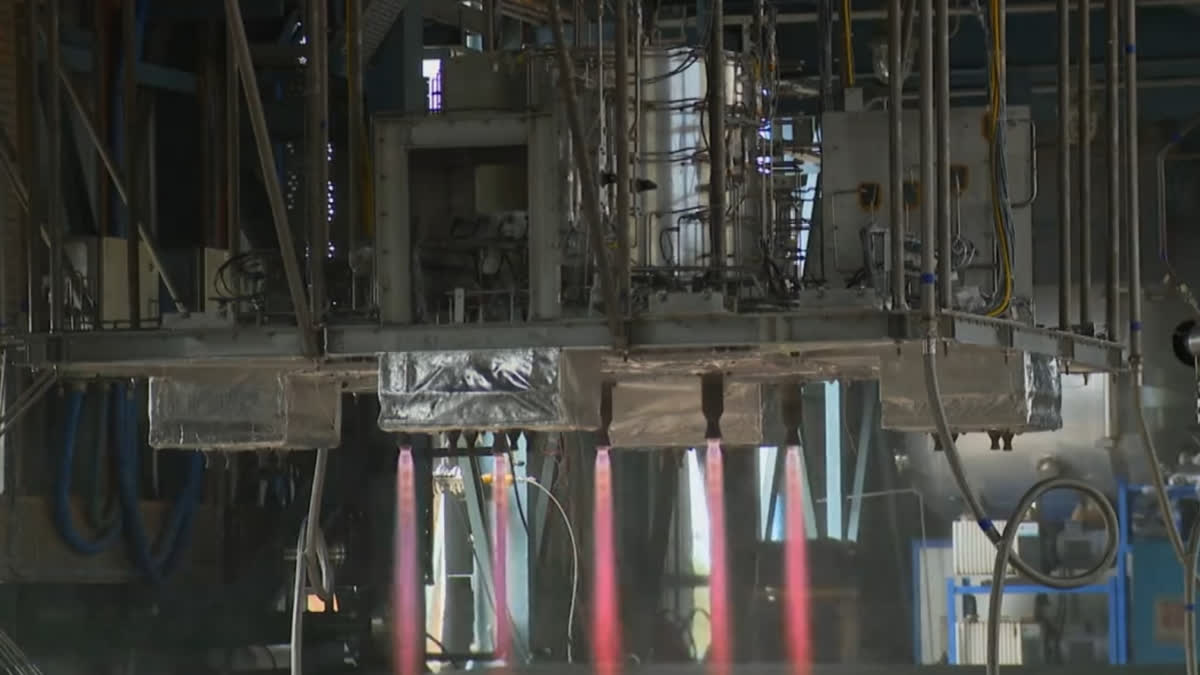Chennai: Indian space agency on Thursday said it has carried out successfully two more hot tests on the Gaganyaan Service Module Propulsion System (SMPS). Gaganyaan is the name of India's first human space mission. According to the Indian Space Research Organisation (ISRO) the two hot tests on Gaganyaan SMPS were done at ISRO Propulsion Complex (IPRC), Mahendragiri on July 26.
-
Gaganyaan Mission:
— ISRO (@isro) July 27, 2023 " class="align-text-top noRightClick twitterSection" data="
Two more hot tests on the Gaganyaan Service Module Propulsion System were conducted successfully at IPRC/ISRO on July 26, 2023.
Tests were conducted in pulsed and continuous modes necessary for the mission.
Three more hot tests are scheduled to demonstrate… pic.twitter.com/Vn7BrzbpHE
">Gaganyaan Mission:
— ISRO (@isro) July 27, 2023
Two more hot tests on the Gaganyaan Service Module Propulsion System were conducted successfully at IPRC/ISRO on July 26, 2023.
Tests were conducted in pulsed and continuous modes necessary for the mission.
Three more hot tests are scheduled to demonstrate… pic.twitter.com/Vn7BrzbpHEGaganyaan Mission:
— ISRO (@isro) July 27, 2023
Two more hot tests on the Gaganyaan Service Module Propulsion System were conducted successfully at IPRC/ISRO on July 26, 2023.
Tests were conducted in pulsed and continuous modes necessary for the mission.
Three more hot tests are scheduled to demonstrate… pic.twitter.com/Vn7BrzbpHE
The SMPS is designed and developed by the Liquid Propulsion System Centre (LPSC) located at Bengaluru and Valiamala in Thiruvananthapuram. These tests marked the second and third hot tests in the Service Module - System Demonstration model (SM-SDM) phase 2 test series. The first hot test was conducted on July 19.
Also read; Chandrayaan-3 mission: ISRO successfully performs 5th orbit-raising manoeuvre
ISRO said during Wednesday's tests, the thrusters were operated in both continuous and pulse mode, in sync with the mission profile. The initial hot test which lasted for 723.6 seconds focused on demonstrating Orbital Module injection and the calibration burn of 100 Newton thrusters and Liquid Apogee Motor (LAM) engines.
The calibration burn was essential to identify and isolate any non-operational engines. The LAM engines and reaction control system (RCS) Thrusters performed as expected. The latter hot test, with a duration of 350 seconds, aimed to demonstrate the circularization of the Orbital Module to achieve the final orbit. During this test, the LAM engines operated in continuous mode, while the RCS Thrusters fired in pulse mode.
Looking ahead, three more hot tests are scheduled to demonstrate de-boosting requirements and off-nominal mission scenarios. These tests will further validate and refine the performance of the propulsion system, ensuring its readiness for the upcoming Gaganyaan mission. (IANS)
(This story has not been edited by ETV Bharat and is auto-generated from a syndicated feed.)



